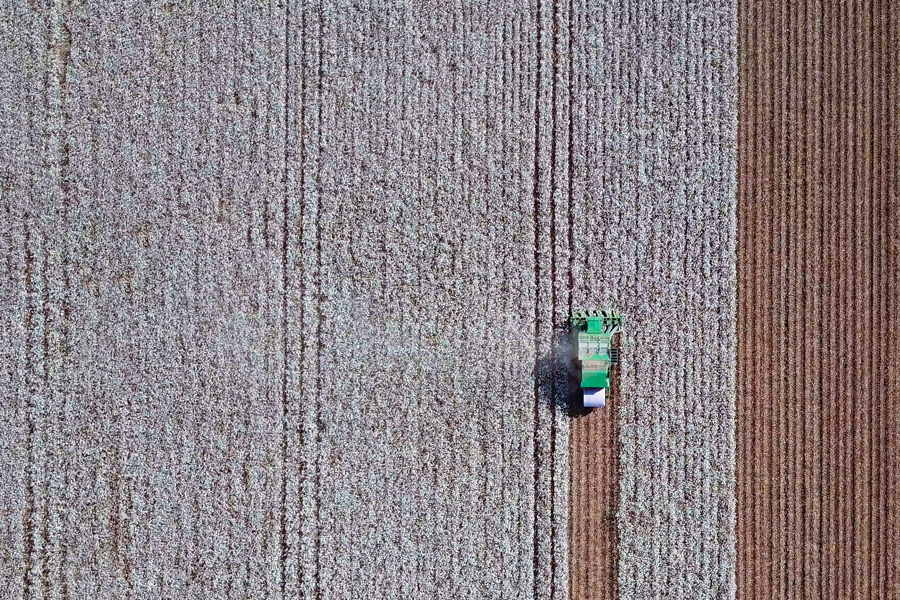Agricultural and Applied Economics
-

AP 130-1-06
2023 Corn, Soybean, and Wheat Outlook
1. The Russia-Ukraine war and Mexico’s plan to ban genetically modified corn from the United States will increase uncertainty regarding corn prices. 2. The United States and the world will continue to have a tight wheat supply in 2023, supporting higher than average wheat prices. 3. The low ending stocks of U.S. soybeans indicate the need for more soybeans. Ending stocks might improve in 2023, leading to softer soybean prices.
Amanda R Smith and Yangxuan Liu
|
-

AP 130-1-07
2023 Beef Cattle Outlook
1. Severe drought elevated cow slaughter in 2022. With fewer cows to slaughter in 2023, cattle prices are expected to increase. 2. China could become the largest export destination for U.S. beef in 2023. 3. As per capita beef consumption grows, there also will be a growing interest in plant-based alternatives.
Amanda R Smith
|
-

AP 130-1-08
2023 Pork Outlook
1. 2022 U.S. pork prices continue to increase because of the limited number of slaughter-ready pigs. 2. Good outlook for 2023 as feed prices likely decrease and export demand increases.
Amanda R Smith
|
-

AP 130-1-09
2022–2023 Commercial Poultry Outlook
Author: Dennis Brothers, Associate Extension Professor, Auburn University, Agricultural Economics and Rural Sociology. 1. The domestic chicken market is strong with a good supply in the short- to midterm, though highly pathogenic avian influenza (HPAI) continues to loom large in the United States and could be a major impact in 2023. 2. High building costs an increasing interest rates are obstacles to expansion on the live side. 3. Future changes to the contract-grower pay model could be beneficial to growers, but caution is warranted. 4. HPAI and California Proposition 12 ruling likely to have an impact on future table egg prices.
Amanda R Smith
|
-

AP 130-1-10
Honey Bees 2023
1. Honey production overall for 2022 was below average for the state. However, in some regions yields of two types of honey, northern wildflower and sourwood, were above average. 2. Colony losses for commercial operations were higher than 2021, with some reporting a 60%–70% loss, and backyard beekeepers in some cases experiencing losses above 80%. 3. Varroa destructor (parasitic mites) remains the leading cause of colony loss in Georgia and nationally. 4. Demand for packages, nucleus colonies, and queens were down for 2022.
Jennifer A Berry, PhD and Amanda R Smith
|
-

The Agricultural Act of 2018 (2018 U.S. Farm Bill) extended the nonrecourse marketing assistance loan (MAL) and loan deficiency payment (LDP) feature for the 2019 through 2023 crop years for upland cotton. This publication provides examples and a decision tree for choosing between the marketing assistance loan and loan deficiency payment program for cotton.
Yangxuan Liu
|
-

The Agricultural Act of 2018 (2018 U.S. Farm Bill) extended the cotton commodity loan programs for the 2019 through 2023 crop years. Cotton commodity loan programs include the marketing assistance loan (MAL) program and the loan deficiency payment (LDP) program. These programs provide cotton producers with alternative marketing tools during periods of low cotton prices. Cotton producers can receive marketing loan benefits in the form of marketing loan gains (MLG), loan deficiency payments (LDP), commodity certificate exchange gains, and forfeiture gains. Producers can participate in the MAL or obtain an LDP on all or part of their production at any time during the loan availability period, from harvest until May 31 of the following calendar year.
Yangxuan Liu
|
-

Starting a farming or commercial production enterprise requires more than knowledge of agriculture or livestock management. The business side of farming is a critical factor in the success and sustainability of the enterprise. This resource can help answer common questions that beginning farmers have about planning, licensing requirements, financing options, training, and more.
Heather Kolich and Amanda R Smith
|
-

AP 130-1
2023 Georgia Ag Forecast
The entire publication is viewable using the “View PDF” button above. Each year, UGA’s agricultural economists develop a comprehensive overview to help various sectors of the agriculture industry navigate the year ahead. As Georgia’s land-grant university, the University of Georgia conducts cutting-edge research on critical and emerging issues that are important to the agriculture industry. From this research, UGA provides the best information and education available to producers and constituents to equip them with knowledge and decision-making tools for their businesses. The overall U.S. outlook projections include: 1. In 2023, the postpandemic expansion will end, and a mild recession will begin. 2. The 2023 recession will be mild and short. 3. Tight monetary policy because of high inflation is the main reason to expect a recession. Energy price shocks are a second reason to expect a recession. 4. Georgia’s economy will do better than the U.S. economy as a whole. 5. Economic development projects will provide a solid push to Georgia’s economy.
Esendugue Greg Fonsah, Jennifer A Berry, PhD, Amanda R Smith, Ben Campbell, Yangxuan Liu, John Salazar, and Yanshi Li
|